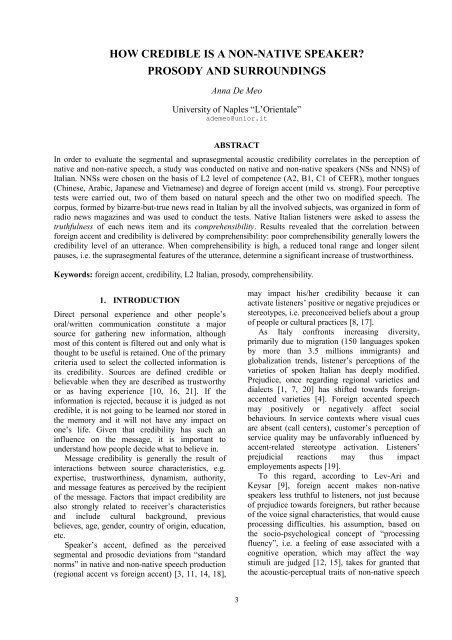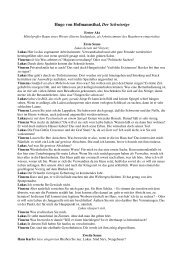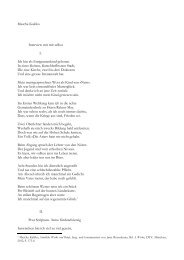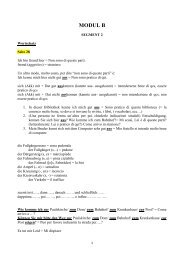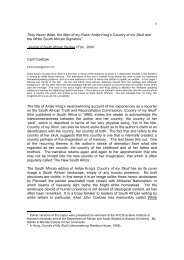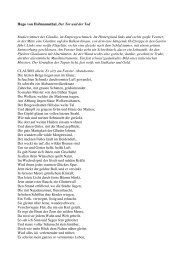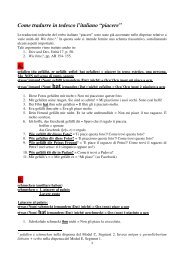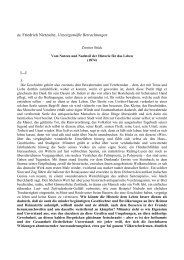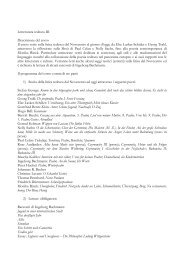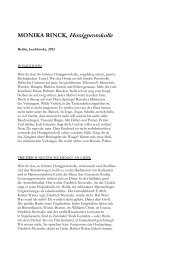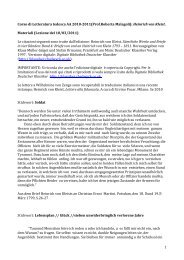Methodological Perspectives on Second Language Prosody
Methodological Perspectives on Second Language Prosody
Methodological Perspectives on Second Language Prosody
Create successful ePaper yourself
Turn your PDF publications into a flip-book with our unique Google optimized e-Paper software.
HOW CREDIBLE IS A NON-NATIVE SPEAKER?<br />
PROSODY AND SURROUNDINGS<br />
Anna De Meo<br />
University of Naples “L’Orientale”<br />
ademeo@unior.it<br />
ABSTRACT<br />
In order to evaluate the segmental and suprasegmental acoustic credibility correlates in the percepti<strong>on</strong> of<br />
native and n<strong>on</strong>-native speech, a study was c<strong>on</strong>ducted <strong>on</strong> native and n<strong>on</strong>-native speakers (NSs and NNS) of<br />
Italian. NNSs were chosen <strong>on</strong> the basis of L2 level of competence (A2, B1, C1 of CEFR), mother t<strong>on</strong>gues<br />
(Chinese, Arabic, Japanese and Vietnamese) and degree of foreign accent (mild vs. str<strong>on</strong>g). Four perceptive<br />
tests were carried out, two of them based <strong>on</strong> natural speech and the other two <strong>on</strong> modified speech. The<br />
corpus, formed by bizarre-but-true news read in Italian by all the involved subjects, was organized in form of<br />
radio news magazines and was used to c<strong>on</strong>duct the tests. Native Italian listeners were asked to assess the<br />
truthfulness of each news item and its comprehensibility. Results revealed that the correlati<strong>on</strong> between<br />
foreign accent and credibility is delivered by comprehensibility: poor comprehensibility generally lowers the<br />
credibility level of an utterance. When comprehensibility is high, a reduced t<strong>on</strong>al range and l<strong>on</strong>ger silent<br />
pauses, i.e. the suprasegmental features of the utterance, determine a significant increase of trustworthiness.<br />
Keywords: foreign accent, credibility, L2 Italian, prosody, comprehensibility.<br />
1. INTRODUCTION<br />
Direct pers<strong>on</strong>al experience and other people’s<br />
oral/written communicati<strong>on</strong> c<strong>on</strong>stitute a major<br />
source for gathering new informati<strong>on</strong>, although<br />
most of this c<strong>on</strong>tent is filtered out and <strong>on</strong>ly what is<br />
thought to be useful is retained. One of the primary<br />
criteria used to select the collected informati<strong>on</strong> is<br />
its credibility. Sources are defined credible or<br />
believable when they are described as trustworthy<br />
or as having experience [10, 16, 21]. If the<br />
informati<strong>on</strong> is rejected, because it is judged as not<br />
credible, it is not going to be learned nor stored in<br />
the memory and it will not have any impact <strong>on</strong><br />
<strong>on</strong>e’s life. Given that credibility has such an<br />
influence <strong>on</strong> the message, it is important to<br />
understand how people decide what to believe in.<br />
Message credibility is generally the result of<br />
interacti<strong>on</strong>s between source characteristics, e.g.<br />
expertise, trustworthiness, dynamism, authority,<br />
and message features as perceived by the recipient<br />
of the message. Factors that impact credibility are<br />
also str<strong>on</strong>gly related to receiver’s characteristics<br />
and include cultural background, previous<br />
believes, age, gender, country of origin, educati<strong>on</strong>,<br />
etc.<br />
Speaker’s accent, defined as the perceived<br />
segmental and prosodic deviati<strong>on</strong>s from “standard<br />
norms” in native and n<strong>on</strong>-native speech producti<strong>on</strong><br />
(regi<strong>on</strong>al accent vs foreign accent) [3, 11, 14, 18],<br />
may impact his/her credibility because it can<br />
activate listeners’ positive or negative prejudices or<br />
stereotypes, i.e. prec<strong>on</strong>ceived beliefs about a group<br />
of people or cultural practices [8, 17].<br />
As Italy c<strong>on</strong>fr<strong>on</strong>ts increasing diversity,<br />
primarily due to migrati<strong>on</strong> (150 languages spoken<br />
by more than 3.5 milli<strong>on</strong>s immigrants) and<br />
globalizati<strong>on</strong> trends, listener’s percepti<strong>on</strong>s of the<br />
varieties of spoken Italian has deeply modified.<br />
Prejudice, <strong>on</strong>ce regarding regi<strong>on</strong>al varieties and<br />
dialects [1, 7, 20] has shifted towards foreignaccented<br />
varieties [4]. Foreign accented speech<br />
may positively or negatively affect social<br />
behaviours. In service c<strong>on</strong>texts where visual cues<br />
are absent (call centers), customer’s percepti<strong>on</strong> of<br />
service quality may be unfavorably influenced by<br />
accent-related stereotype activati<strong>on</strong>. Listeners’<br />
prejudicial reacti<strong>on</strong>s may thus impact<br />
employements aspects [19].<br />
To this regard, according to Lev-Ari and<br />
Keysar [9], foreign accent makes n<strong>on</strong>-native<br />
speakers less truthful to listeners, not just because<br />
of prejudice towards foreigners, but rather because<br />
of the voice signal characteristics, that would cause<br />
processing difficulties. his assumpti<strong>on</strong>, based <strong>on</strong><br />
the socio-psychological c<strong>on</strong>cept of “processing<br />
fluency”, i.e. a feeling of ease associated with a<br />
cognitive operati<strong>on</strong>, which may affect the way<br />
stimuli are judged [12, 15], takes for granted that<br />
the acoustic-perceptual traits of n<strong>on</strong>-native speech<br />
3


